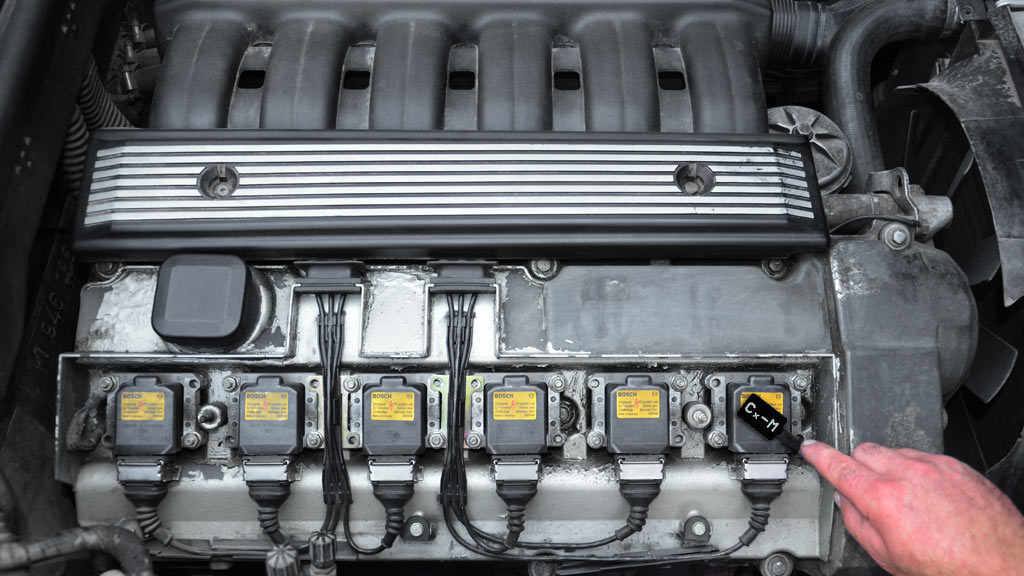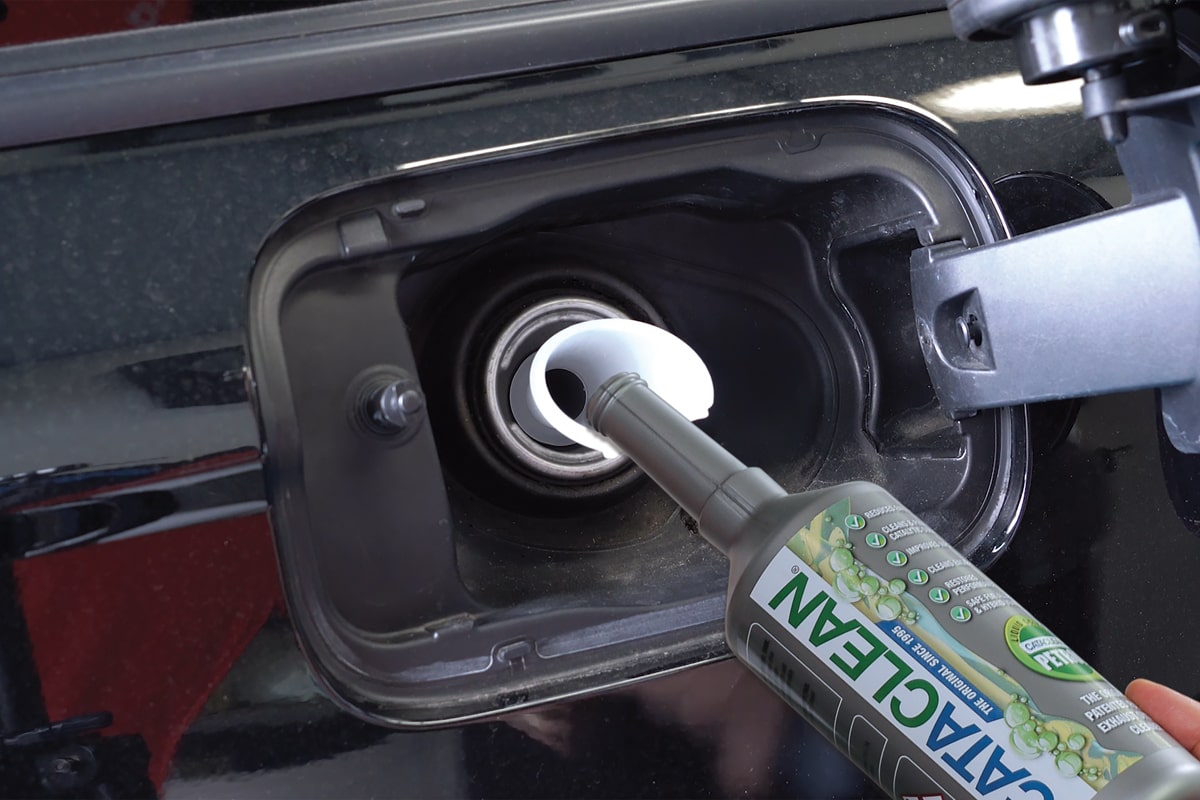Buying a Car For Business: Tax Benefits & Tips
If you own a small business, using your personal car for business-related errands can quickly pile up the miles and incur a hefty bill for gas and maintenance. Talk to any accountant or seasoned business owners, and they’ll tell you to buy and register a separate vehicle as a company car. Buying a car for business has considerable tax benefits: you can deduct the entire cost of operation for the company car from your taxable business income, including depreciation.
That said, there are many important considerations for you as the owner in order to pick the most beneficial vehicle for your business as well as taking full advantage of the available tax benefits. This is a crucial industry knowledge that many don’t know about, but one that will help you save a lot of money in the long run. Stay in the know and learn about all the tax benefits of buying a company car for small business, tips for choosing the right car and the procedures required to claim your tax benefits.
Personal Vehicle vs Business Vehicle
Many owners of family businesses use the same vehicle for personal and professional uses. If you split a personal vehicle as such, it’s very hard to keep track of and separate the miles and other expenses associated with its business use with those incurred for personal use.
This is important because you can deduct the business-related costs for your company car from your business’ deductible income. But that is business-related costs only, excluding anything personal.
Therefore, the first benefits of buying and registering a car specifically for business use is you can easily keep track of your business expenses and claim your tax benefits. There are multiple tax benefits when you’re buying a car for business even if it’s a small one-person company, and especially if you have other employees apart from yourself.
The entire cost of operation for every vehicle registered to your company is deductible from the income your corporation earns. Specifically, depreciation and other deductible expenses are calculated based on the total cost of the vehicle when it’s placed in service. This includes the sales tax you paid for it and the cost to register the vehicle. Furthermore, you can also claim the miles incurred by you and your employees and well as repair and maintenance expenses.
Depreciation is probably the biggest deductible for corporate vehicles. In the US, under the new tax law, you will get significant depreciation “bonuses” for corporate vehicles as long as the vehicle was placed in service between Sept. 28, 2017, and Dec. 31, 2026. You’ll get a $18,000 bonus, or in other words, deductible, in the first year. In the second year, you’ll get a $16,000 bonus and $9,600 in the third year. Starting from the forth year until the vehicle reaches full depreciation, you’ll get $5,760 for each year.
Buying A Car For Business: Consider These First

Leasing vs Owning a Company Car
Your first consideration may be between leasing or buying a car for business. Leasing might be a good option, especially if you’re just starting out and don’t know how the business will fare. If you choose to go this route (actually regardless of what you opt for), proper vehicle maintenance is always important, as you might be able to lower the cost of the lease if the vehicle still remains a high residual value at the end of the lease.
One advantage of leasing is you typically will only need to pay a security deposit in advance, which is usually the first month’s payment. This is much less than the upfront costs when you purchase the vehicle. However, the biggest downside is you won’t be able to claim depreciation as a tax deduction, as this is only available when you purchase the vehicle. That said, mileage expenses are deductible in the cases of both leased vehicles and owned vehicles.
Otherwise, if you opt for buying a car for business instead, you will need an initial down payment. In addition, you may need financing. Do note that sometimes when an accident occurs and the vehicle suffers a damage that lowers its fair value, you still have to pay back the outstanding loan even if the car’s value is now worth less than what you borrowed.
Buying: New Car vs Used Car
If you’re thinking about buying a car for business, then there’s the choice between buying new and buying used. Buying a used car of course will save you some money, but there are risks involved and thus you need more time for research and inspection to make sure the car is in good working order. It’s best to bring a trusted and qualified mechanic with you to look for any major issues that’s not worth buying and then fixing.
If you’re buying used, there are two routes. You may buy from a private seller; this kind of one-on-one dealing gives you more negotiation power and might allow you to get a great deal. The other way is to go to public auctions, where you can get access to more vehicles, but you’ll only be able to inspect the cars there by eyes and won’t get to test drive them.
READ MORE
Although it requires a keen eye, you can rely on some pro tips for purchasing a used vehicle for your business from a private seller or a dealer:
- The first step when you spot a car you’re interested in is to look for its “blue book” value in an auto dealer’s guide. This amount is the average prices that a number of polled dealers have been getting recently for selling the same make and model. You should not be charged significantly above the blue book value.
- Ask for the VIN of the vehicle and get a VIN report to check whether the vehicle has suffered any major damage from an accident, has any factory defect, or any other material incidents that would lower the value of the vehicle.
- When you schedule a meetup, bring along your own trusted mechanic to inspect and test drive the vehicle.
- You can negotiate a lower price by using any faults that you found after the VIN check plus any defects that your mechanic finds in the vehicle, given that your mechanic can fix these faults later on to restore the vehicle to good working condition.
- You won’t get this from a private seller, but if you’re buying a used vehicle from a seller, you are entitled by state and federal laws to get a warranty up front and in writing, especially guarantees that the car will pass emission and safety inspections.
How To Pick The Right Car For Your Business
Aesthetics Is Very Important
One of the tips for buying a business car that many underestimate is to pay attention to aesthetics in addition to functionality. After all, your company car represents your brand to your business partners and customers, as well as any onlookers on the street.
Corporate vehicles these days are therefore treated also as a form of mobile advertisement on wheels that increases your brand’s exposure to the public as you drive around town. Thus, you can try to make this effective advertising as pleasant looking and/or eye catching as possible.
In addition to choosing a vehicle with an aesthetically pleasing shape and design, you can also repaint it or use wraps for more elaborate colouring, finishes and effect to make your company car not just beautiful to look at but also stand out from the crowd when you navigate around. Depending on the type of your business, you can go from lowkey to just a bit over the top.
Turning your company van into a colourful, eye-catching billboard is actually a highly effective way to promote your business. On average, a vehicle advertisement can get between 30,000 and 70,000 daily impressions by other vehicles and pedestrians just by commuting around town for business trips.

Choose the Right Size
The specific model and its size, including cargo space, are very practical considerations when you’re buying a car for business. Think about how many companions would typically ride the vehicle, how often and how far an average trip would be, and how much sample goods or goods would be stored in the cargo at the back. Then assess how much space you’ll need for both passengers and cargo. Would you need a van to accommodate everything?
Too big a vehicle would be a big waste, plus would be harder to maneuver around and drive into tight parking spaces. Meanwhile, a car too small would impede your ability to do business smoothly. In addition, try to anticipate the growth of your business in the next five or ten years, which is about the average time an owner would hold on to a vehicle (after ten years you might also want to switch to a newer, more eye catching model). This is a tricky task, but try to include such a forecast into your considerations.
Advantage of buying a big vehicle
An important and interesting note: If you’re buying a qualifying SUV or pickup as your corporate vehicle, under the new US tax law, Section 179, you may be able to get a big tax break. Specifically, you’re entitled to a tax deduction of up to $25,000 in the first year the vehicle is in use if the vehicle is a heavy SUV, pickup or van that meets the IRS’s specifications and if you use it 50 percent or more of the time. Repeat that the max-$25,000 deductible is what you can get for the first year of use only.
Remember that you can also claim depreciation bonus, given that you bought the vehicle new. Do note that to be able to claim depreciation bonus, the company car must continue to be put in use for business purposes at least 50 percent of the time. In addition, your total deduction for a given year can’t be more than your total net business taxable income. If these conditions are not met, you will be forced to pay back some of your tax deductions.
Fuel Economy Is Crucial
If you’re just getting a personal car, you can get the fanciest one you can afford. However, when it comes to buying a car for business, you need to be practical and preservative. You wouldn’t want a company car that eats up fuel and makes you deal with hefty gas bills over time, on top of another million operational expenses.
Therefore, after aesthetics and size, fuel economy is another criteria of utmost importance. You can keep a tab on the car’s fuel efficiency by using online miles-per-gallon calculators in order to keep refueling under control and save money for your business.
Consider Useful Add-Ons
Another consideration that many small business owners overlook is optional extras for a car. While some extras might not be imperative for you, there are many beneficial features that offer more safety or minimize vehicle depreciation. All depends on the nature and characteristics of your business.
For instance, passenger airbags are a handy safety feature in case you will typically need to carry other employees in the company car.
Another common example is if you’re a small local business that serves a limited group of customers within a limited geographic location, then having satellite navigation is not imperative. This feature then wouldn’t be imperative for you, plus it drains battery power, and you can always use Google map on your mobile phone for navigating. Otherwise, if your business requires long distance traveling, then GPS is an essential add-on to have on your dashboard.
And lastly, there are a variety of cosmetic add-ons that will enhance the appearance of your vehicle, such as alloy wheels and a metallic paint job. These are not as practical and useful as the features above, but better aesthetics also helps improve your brand image and a sense of prestige, and they also help fight off depreciation.
Buying A Car For Business: Other Procedures
Get Business Car Insurance
The next step in buying a car for business is to make sure your newly purchased company car is covered with adequate insurance. Do note that while business-level insurance costs much more than standard policies, you shouldn’t be tempted to skimp on your cover. Make sure you do your homework to really understand the different types of business car insurance policies and consider different aspects of your business to pick one with adequate protection.
There are typically three levels of insurance coverage for corporate vehicles: one-person companies with use by the owner only (one single driver), business use for multiple drivers (owners and employees) and commercial use (typically for bigger businesses with more than one vehicles, but can also fit small businesses with one or a few vehicles).
Take your time to explore different levels of coverage by different insurance providers to find the appropriate one for your business, depending who will drive the vehicle, how often and how far it will travel, whether you own, rent or lease and other considerations.
One common question is in the case that you’re using the same vehicle for both personal and business use, whether your personal auto policy will cover business use. The answer is no.
Although your, and your employees’ personal auto policy provides coverage for some business use of your vehicle and their vehicles, it will not provide coverage if the vehicle in question is used primarily for business use, that is 50 percent of the time or more. And of course, if you have a personal car and a company car, the auto policy on your personal car will not provide any coverage for the other car owned by your business.
In most cases, depending on where your business is, you’ll be required by law to get liability insurance for bodily injury and property damage caused by accidents that occurred while you or your employees are driving for business purposes. The Business Auto Coverage Form (BACF) is the most commonly business auto liability insurance. The recommended minimum coverage for liability insurance in accidents for all businesses, even very small companies, is $500,000.
You might also be required to purchase medical payments coverage (also called Personal Injury Protection (PIP)) and/or uninsured/underinsured motorists coverage. In addition, there’s also the optional physical damage coverage for any vehicles that your business owns, leases or hires. There are three types of physical damage coverage, with protection ranging from collision and overturning damage only, to also include wear and tear, mechanical breakdown, theft, glass breakage, falling objects, colliding with a wild animal, flood, fire and natural disasters.
Registration
When you buy a new vehicle, in most cases, the dealer will handle the registration for you. Otherwise, if you’re buying a used vehicle, make sure to register the vehicle within thirty days of purchase.
Vehicle registration procedures vary from state to state, but in general, the requirements are based on the weight of the vehicle, and you’ll need to show your driver’s license, the car’s title and proof of auto insurance. So do your homework and know the laws of the place you do your business.
READ MORE
- How To Tell If A Used Car Has Been In An Accident?
- Buying A Used Minivan: Is The Car Really Worth Buying?
Bonus: How To Claim Tax Benefits On Your Company Car
Claiming Actual Expenses vs Claiming Business Mileage
There are two ways to claim the expenses associated with your company car. The first option is to keep track and calculate your total actual expenses, and the second is to claim a flat rate for each mile driven for business purposes.
The flat rate option is much more convenient, as you only have to track your mileage for the year and make a simple multiplication. If you have a separate company car for business errands, then calculating your yearly mileage is super simple, as you only need to record the starting and ending mileage. If you’re using the same vehicle for personal and business use, look for apps that can help you track the total mileage of chosen trips.
In general, if your company car is fuel efficient, then claiming mileage instead of actual gas bills might be a good option. That is, sometimes you’ll likely be able to get a larger deductible than what you actually spent.
Meanwhile, if you choose to claim actual expenses, you must keep all receipts to add them up at tax time. In addition to gas bills, you’re also able to claim tolls, oil changes and tires replacement.
An important note is under the new US tax law, you can only claim depreciation bonus if you choose to claim actual expenses incurred. But if you opt for the flat rate route, you’re not entitled to depreciation deductible. For instance, for the 2019 tax year, the maximum flat rate you can claim for each business mile driven was 58 cents, and no depreciation bonus.
One note is if you use the same vehicle for both personal and business purposes, you can only deduct the mileage for your daily commute from your taxable personal income. You’re only allowed to deduct personal-related miles from the taxable income of your business in the case that you’re temporarily reassigned to another location.
Car Tax Deductibles
If you go the expense-tracking route instead of the mileage route, you can claim various expenses related to your company car each year. This includes lease payments if you’re leasing, auto insurance payments, the sales tax you paid when purchasing the vehicle, and the cost to register it. To claim all these costs as car tax deductibles, you’ll need to include them in the total costs of the company car when you place it in service.
Reimbursing Employees for Company Car Expenses
For you are the sole proprietor or are self-employed, keeping track of and claiming expenses incurred by your company car is simple. However, once you add on other employees, you will need to reimburse your workers on expenses incurred for business use, whether they drive their own cars or the company car for work-related purposes. Then you, as the owner of the company, can keep a good record of those reimbursements and claim them as business expenses at tax time, so you can deduct them from the taxable income of your business.
To devise an effective plan to reimburse your employees on company car expenses, you must make it easy for them to track their mileage and provide you with all receipts. Regarding mileage tracking, whether the employees drive the company car or their own car, you can require your workers to rely on a variety of apps to keep track of and submit their mileage when tax time comes, some of which can automatically detect drives to and makes your life easier.
Regarding receipts keeping, the good news is there are many affordable accounting solutions that will allow your employees to easily upload receipts to the system by simply taking a photo using a smartphone.














